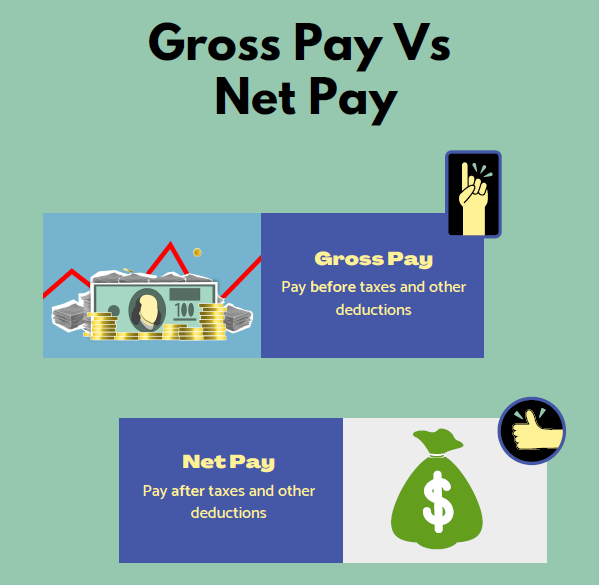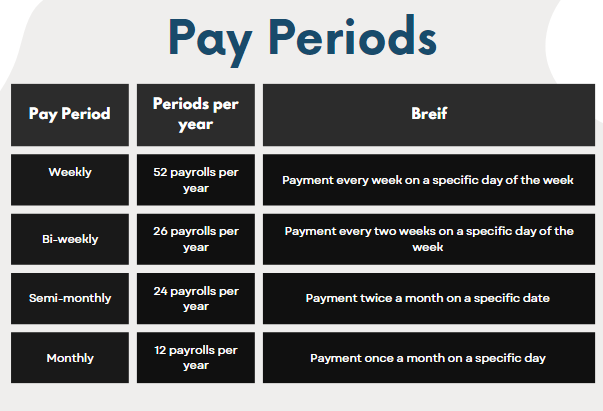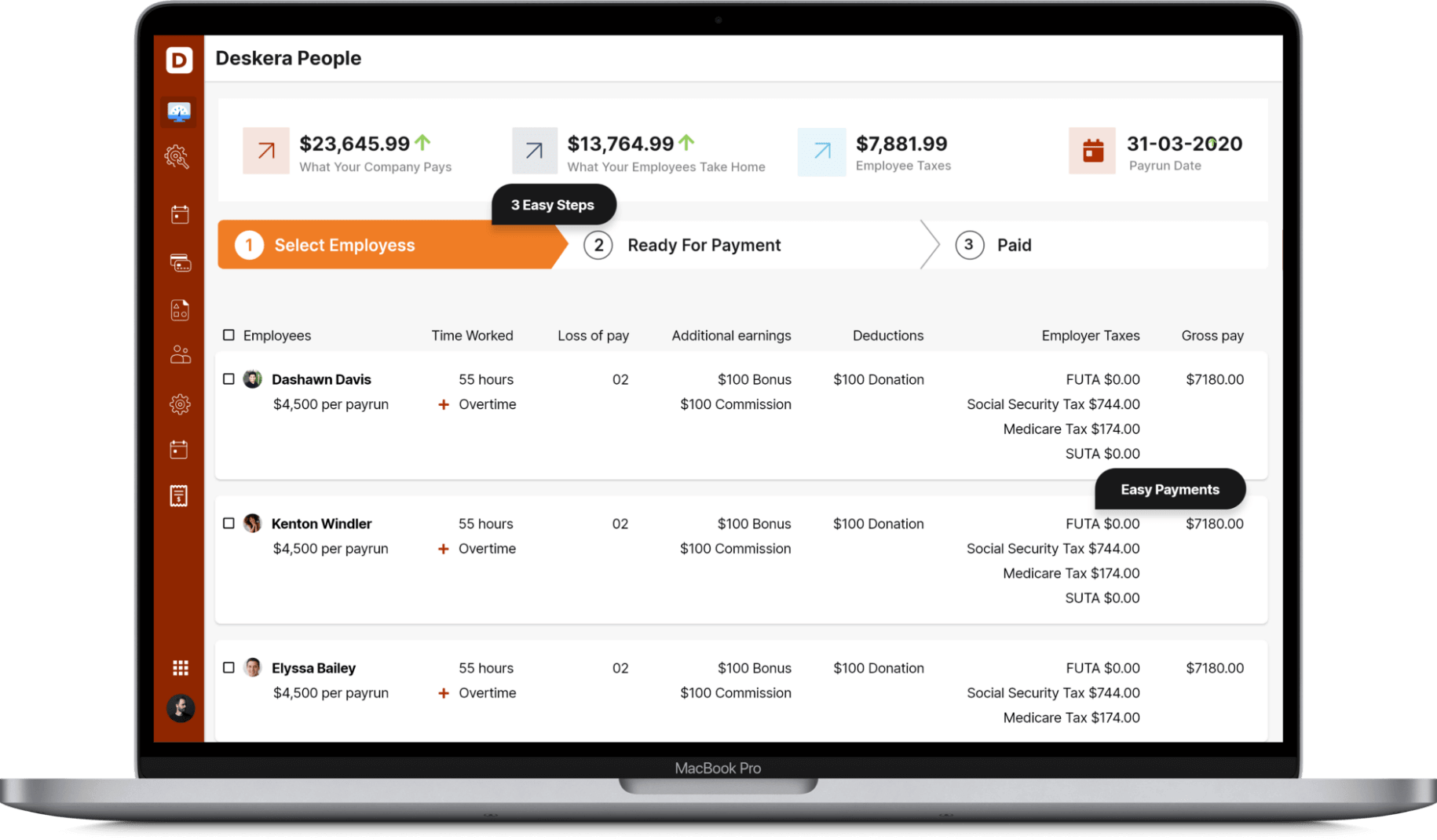When you offer a legally binding contract to a potential recruit, what does it normally incorporate? It includes the gross pay they would get whenever hired. While planning payroll for your workers, you would have to remember both net and gross pay for the pay stubs.

Here, we'll clarify the vital contrasts between gross versus net pay and elaborate on how to calculate it. These are the topics we shall cover:
- What is Gross Pay?
- What is Net Pay?
- Effect of gross pay and net pay on taxes as an employer
What is Gross Pay?
Gross pay is the amount worker gets from an organization before any deductions like medical coverage, taxes, or student loan installments are taken out. The amount remaining after all withholdings are represented is net pay or salary.

At the point when a job is promoted, the compensation offered is normally recorded as the gross pay. This is likewise at times known as your base compensation and excludes any short or long haul incentives or advantages. Managers who understand these two terms are frequently better furnished to arrange pay rates with workers and run payroll effectively.
Gross pay is likewise generally referred to on government and state income tax brackets.
What is deducted from gross pay?
The deductions removed from your gross pay can vary contingent upon what country you live in and the organization you work for. Notwithstanding, here are probably the most widely recognized deductions you could detect on your payslip:
- Taxes: These are mandatory and based on the public authority's tax collection system. The sum is deducted at source from your gross pay. Contingent upon how much your general pay is, this tax will be a level of your overall pay.
- Retirement contributions: This is the money that goes into your annuity typically a percentage of your gross compensation. Most nations deduct a specific level of your compensation to go toward your state pension, and some offer the choice to add to private or organizational benefits moreover.
- Incentives. These can be long or short-term. For instance, a short-term incentive could be a reward paid around the same time after specific targets are met. A long-term incentive could be a 3-to-5-year reward paid as money, equity, or shares in the organization. It's vital that these rewards are viewed as taxable income.
- Insurance: Health care coverage is likely essential for your advantages package, and in this manner deducted from your compensation. The sum relies upon where you are working and what the health care coverage scheme is in that country. As a rule, insurance premiums are deducted from your pay before tax.
- Employee-specific deductions: In the event that you really want to wear a specific uniform or utilize special equipment to go about your business, you could be qualified for an allowance toward these expenses. This should be characterized in your business contract.
Remember that some of these are pre-tax deductions, which means the money is taken from your gross salary before the relevant taxes are applied—like retirement contributions or healthcare, for example. There are also post-tax deductions, which are sometimes taken from your net pay or after the taxes have been applied, such as union fees or charity donations.
Calculating Gross Pay
To calculate the gross pay for a salaried employee, first, determine how many pay periods you have throughout the year. A pay period is the time frame that you’re paying your employee for. These are the different types of pay periods and how many times they occur in a year.

When you know the number of pay periods you have in the year, divide your worker's yearly compensation by the number of pay periods.
For instance, Freddy's yearly compensation is $345,000, and you run finance on a semi-monthly plan, which is 24 payrolls each year. This is the way to ascertain Freddy's gross compensation per pay period:
$345,000/24 = $14,375
You'll pay Freddy $14,375 in gross wages each time you run payroll. Similarly, with hourly workers, you will likewise add some other sources of income to ascertain gross pay.
Therefore, formula for salaries worker:
Gross Pay (Salary)= Annual pay/ No. of Pay Periods
To ascertain gross pay for hourly workers, increase the hourly rate by the hours worked during a payroll interval. For instance, a part-time worker who works 35 hours at $12 each hour will have a gross pay of $420. Additional time rates should likewise be represented, if pertinent.
Therefore, formula for hourly worker:
Gross pay=Worker’s hourly rate*Hours worked
Net Pay
Net pay is the money left once taxes and deductions have been taken with regard to your gross pay. This is the sum that is paid into your ledger and establishes your income.
The pay that workers get to bring home relies upon an assortment of payroll deductions, some of which might be voluntary, though others are compulsory.
In the event that you're a salaried worker, you will normally get a breakdown of your compensation every month on your payslip. Gross pay will for the most part be displayed here-this is the higher figure and is frequently recorded at the highest point of the slip. All taxes and deductions will usually be recorded beneath it.
Next to every one of these items, you'll see a measure of money, which is what will be deducted from your gross pay. The figure left after this is your net pay. Your gross yearly pay will be bigger than your overall gain since it does exclude any deductions.
What influences net pay?
- Federal income tax withholdings: Government income tax responsibility is determined utilizing a bracket system that increments continuously based on pay.
- State income tax withholdings: Like the national government, many states utilize progressive tax brackets, yet others have no income tax by any stretch of the imagination. Furthermore, a few cities impose their own income tax.
- Social Security and Medicare taxes: The Social Security tax rate is 6.2% and Medicare is 1.45%. These taxes are otherwise called Federal Insurance Contribution Act (FICA) or finance taxes; worker contributions should be matched by managers.
- Wage garnishments: A court can order managers to keep a level of a worker's wages to pay for the incurred debt. Instances of garnishments incorporate credit card debt, student loan debt, child support, alimony, medical bills, and back taxes.
- Health care coverage premiums: Despite the fact that businesses commonly cover most of the medical coverage premiums, workers frequently will likewise make contributions to health care coverage premiums each payroll interval.
- Retirement savings: Contributions to a few retirement plans, for example, 401(k), are removed from gross pay.
- Form W-4, Employee’s Withholding Certificate: At the point when workers start a new position, they might finish up a Form W-4, which gives data about their documenting status, wards, and different kinds of income. These subtleties straightforwardly sway how much government income tax is deducted from each payroll period.
Calculating net pay
Before you compute your worker's net pay, you really need to know their gross pay. This is your beginning stage.
Then, you really need to know what deductions your workers have from their checks. A few deductions, similar to FICA taxes and income tax withholdings, are required. Others, similar to health care coverage and retirement contributions, are voluntary.
At last, you'll have to understand your worker's withholding allowance and documenting status, which you can find on Form W-4, Employee's Withholding Allowance Certificate. Your worker filled out this form when they were employed.
Step 1: Calculate the voluntary pre-tax deductions
The initial step to computing your worker's net pay is to take away their voluntary pre-tax deductions from their gross pay.
Voluntary deductions are payroll deductions that your worker decides to have kept from their check, yet aren't legally necessary. Pre-tax implies that the deduction is removed from your worker's gross pay before they settle mandatory payroll taxes. Pre-tax deductions bring down your worker's taxable income and finance taxes.
Sorts of pre-tax payroll deductions that might qualify:
- Retirement contributions
- Health benefits
- Commuter benefits
Step 2: Calculate and Deduct required mandatory payroll taxes
The next step is to compute and deduct your worker's required mandatory finance taxes.
There are two kinds of mandatory payroll taxes, FICA finance taxes, and government income tax withholdings. Contingent upon where you reside, you may likewise have state and local income tax withholdings.
FICA payroll tax
FICA payroll tax is 15.3 percent of your worker's gross pay after pre-tax payroll deductions. This sum goes toward your representatives' Social Security and Medicare.
As a business, you pay half of this expense (7.65 percent), and your worker pays the other half. The worker's part is deducted from their gross pay. Of the worker's part, 6.2 percent goes towards Social Security tax and 1.45 percent goes toward Medicare tax.
There are a few extraordinary cases to know about. For Social Security tax, there's a cap on how much gross pay is dependent upon Social Security tax. This is known as the Social Security wage base. That implies any profit more than $132,900 isn't dependent upon Social Security tax.
There's likewise an extra Medicare tax assuming your worker earns more than $200,000 in gross earnings. The extra Medicare tax is 0.9 percent of any wages more than $200,000.
Federal income tax
Notwithstanding Social Security and Medicare tax, your worker likewise has income tax deducted from their check. To ascertain your worker's income tax savings, you'll require:
- Your worker's filing status
- Your worker's withholding recompense
- Your worker's gross wages
- Your payroll schedule
The IRS Income Tax Withholding table for the current year found in Publication 15-A
Step 3: Account for other mandatory payroll deductions
There are a couple of instances when your workers might have other mandatory payroll deductions, called wage garnishments. Garnishments are for back child support payments, credit card debt, delinquent student loans, and unpaid taxes.
Assuming your worker has a mandatory wage garnishment, you'll be advised by the government and educated regarding the sum that you really want to keep from every check.
Effect of gross pay and net pay on taxes as an employer
As a business, you are answerable for paying a portion of your worker's FICA finance taxes, which is 7.65 percent of your worker's gross pay. Of this 7.65 percent, 6.2 percent goes toward your worker's Social Security and 1.45 percent goes towards their Medicare.
The Social Security wage base applies to businesses. After your worker's wages surpass the pay base, you'll never again cover Social Security tax. Then again, the extra Medicare tax doesn't make a difference to businesses, and just your workers will make good on this additional tax.
As a business, you truly do pay an extra finance tax called FUTA, which finances the unemployment benefits program.
FUTA charge is six percent of the first $7,000 in gross wages you pay every one of your workers each year. Numerous businesses get a FUTA tax break of 5.4 percent on the off chance that they pay their state's unemployment taxes on schedule. This drops the FUTA tax down to 0.6 percent.
How Can Deskera Help with Gross and Net Pay?
Deskera People is a cloud-based software that will help to create and assign custom pay components to an employee in light of your requirements.

Deskera People will distinguish those components assigned to the employee and naturally compute the wages taking in the specific conditions which can be designed in each component like pre and post-tax deductions.
You simply need to access the dashboard, and you have all your employee's data aligned together. The People Dashboard portrays all the relevant data like the cost of the past pay run and evaluates the upcoming one. Simply set up employee rewards, voluntary deductions, taxes, etc.
Key takeaways
- Understanding the distinction between gross pay and net pay is vital to realize how much money you'll get on payday. It's additionally significant for understanding your taxes and can assist you with planning for your month-to-month everyday costs.
- Gross pay is how money your workers get before any deductions and allowances are taken out. For instance, when you tell a worker, "I'll pay you $60,000 every year," it implies you will pay them $60,000 in gross wages.
- Net pay is how much cash your workers bring home after all deductions have been taken out. This is the cash they really get on payday.
- FICA incorporates Social Security and Medicare contributions. Different deductions to your gross pay will incorporate any deductions for items, for example, healthcare or dental protection, retirement contributions, union or membership dues, charity donations, or different deductions that may be a picked or required component to the job.
Related Articles













